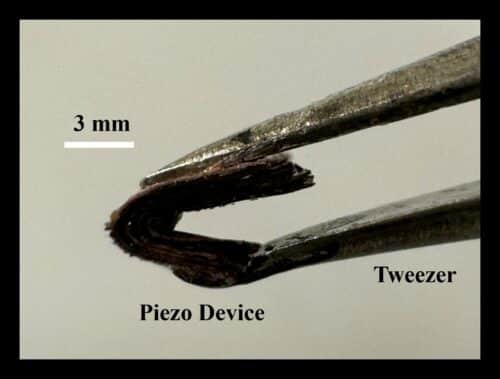The wearable technology generates electricity from body movements, allowing you to charge devices like laptops and smartphones…

A technology that generates electricity from vibrations or small body movements could allow you to charge your laptop while typing or power your smartphone during a morning jog. Researchers at the University of Waterloo have created a wearable generator to address the need for sustainable, clean energy. This technology is also scalable for larger machines.
The device works through the piezoelectric effect, which generates electrical energy when pressure is applied to materials like crystals and certain ceramics. Piezoelectric materials are already used in various technologies, including sonar, ultrasonic imaging, and microwave devices, but they have limitations. These materials are typically brittle, expensive, and inefficient in generating electricity for practical applications. To overcome these challenges, the researchers have combined piezoceramic materials with flexible polymers, creating a new generation of piezoelectric nanogenerators (PENGs) that are more energy-efficient, cost-effective, and adaptable for wearable, flexible, and implantable devices.
One of the main obstacles for PENGs is producing both high voltage and sufficient current. While PENGs can generate enough voltage (over 3V) for many applications, their low current output has limited their use in charging electronic devices. Researchers are actively working to enhance current output by designing innovative device structures and using materials with stronger piezoelectric properties, such as stacked piezoceramic nanowires, to boost performance.
The researchers explained that while traditional piezoelectric materials have benefits, their brittle nature and high costs make them less practical for widespread use. The new materials developed for this generator are not only flexible and more energy-efficient but also much more affordable. This breakthrough technology could significantly impact various industries, particularly wearable electronics, medical devices, and aviation.
The research team has already filed a patent for their technology and is collaborating with a Canadian company to commercialize the generator. The team envisions this technology being used in aviation, specifically to power systems on airplanes that monitor the status of safety equipment. This would offer a new way to generate power in flight while improving the efficiency and sustainability of air travel.
Reference: Asif Abdullah Khan et al, Breaking dielectric dilemma via polymer functionalized perovskite piezocomposite with large current density output, Nature Communications (2024). DOI: 10.1038/s41467-024-53846-6







